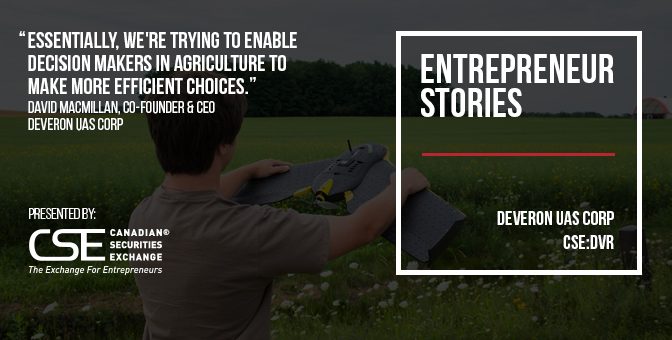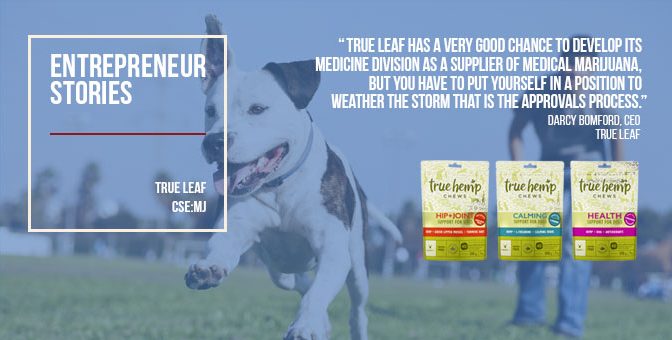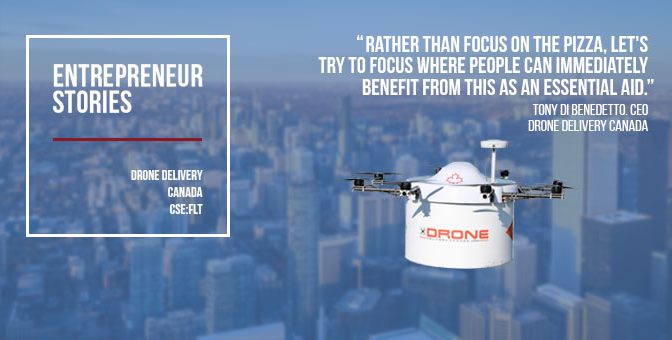Earlier this week, Peter Murray of Kiyoi Communications sat down with John Fowler, President and CEO of Supreme Pharmaceuticals (CSE:SL) to discuss his perspective on the commercialization of cannabis, how the landscape has shifted in the past several years and how choosing to list with the Canadian Securities Exchange enabled Supreme Pharmaceuticals to move quickly in this rapidly evolving space. Below is the transcript of the interview.
1.
Ten years ago you were assisting medical cannabis patients with legal issues and now you are President and CEO of a company worth over $250 million helping patients in a more relaxed regulatory setting. How has the environment changed and when did you realize what a major business opportunity the cannabis sector would present?
It is impossible in this day and age not to have some understanding of the scale of illegal trade in cannabis. It is something I don’t participate in myself, but the point is that the business opportunity in cannabis, assuming a reasonable environment governing use for medical purposes, and ultimately for recreational purposes, has always been clear.
Regulated medical cannabis use became legal in Canada in 2001, so there was that setting from a patient rights perspective – a patient could legally access cannabis. But from a business perspective it wasn’t there. When Prime Minister Harper created what has now become the ACMPR (Access to Cannabis for Medical Purposes Regulations) – basically, highly regulated cannabis cultivation – I sensed the perfect business opportunity had arrived. This was an opportunity few are fortunate enough to have, the chance to create a business doing something you are passionate about. For me that was the combination of operating in a complex regulatory environment while working with the cannabis plant.
The best way to note the change is that when we founded this business in 2013 we expected it could take even up to 10 years post-licensing to complete the greenhouse project, and now we are looking to get it done in 24 months or less.
2.
How has Supreme been able to develop into one of the industry’s leaders so quickly?
Our biggest advantage is that our team is committed to the cannabis space. Even though we have only been at this for three or four years, most of the team and executives who work with me have been thinking about this for much longer. What that has allowed us to do is move quickly to define our business, to recognize where we feel it is best to invest in core competencies, and for us that’s cultivation, and how to market a very transparent story.
When you are really focused and passionate about doing something well, which for Supreme is taking craft cannabis and developing it on a massive scale – in a nutshell, showing that “big pot” doesn’t have to be “bad pot” – that resonates with the market, whether it is the capital market, the general public or the consumer market. This has been our guiding vision, the goal of being a top cultivator and developing the competency of scaled cultivation that has allowed us to gain a favourable market position.
3.
Supreme has always highlighted its role as a cannabis producer. Do you expect to extend the brand across different verticals in the future?
A lot depends on how the market unfolds. We are very clear at Supreme that we don’t have a crystal ball. Rather, we build competencies in a way that sets the company up for maximum flexibility.
I believe when you have a unique market opportunity like this, where the macro outlook is generally very positive – recreational legalization is coming and new international markets are opening – but the minutia at the planning level is still uncertain, you have to build in flexibility. We felt that by investing in the building of core competency at scaled cultivation and developing management systems to support that, we were building a business in the most moded part of the industry. Cultivation has the highest costs in terms of barriers to entry, Health Canada approval is a multi-year process, and it is hard to find transferable skills.
After that we can leverage our success in cultivation into whatever aspect comes next. In terms of what makes most sense at the time, it could be international, it could be products, it could be extracts – it really depends on what our market data tells us when we are looking to make our next step.
4.
Supreme is based, and has its operations, in Canada but are there opportunities in the United States that the company could be attracted to?
The US is a fantastic market that is moving quickly. At the end of the day, cannabis remains federally illegal in the United States, so we are not looking at the US actively in terms of making large capital investments. That said, we take a lot of guidance from markets like California in terms of cultivation best practices, industry trends and product iteration.
5.
How do you see the industry evolving going forward and what should be the main areas of focus from the standpoint of companies and investors?
As the cannabis market matures and grows, we should anticipate many more players coming into the space. I believe what that is going to mean is that companies have to specialize. I don’t think there is one aspect of the industry that is right for all companies. A company should have a core competency where they do something with the ambition of being the best in the world at it.
For us, that is cultivation. In the future we may expand that, but our goal is to develop a leadership position in cultivation. Any entrant into the space is going to have to figure out the aspects of the industry that they do better than anyone else in the world and focus their energies on that. And I think investors should be looking at that type of commitment to excellence from companies they are investing in.
6.
Supreme is one of a handful of companies to successfully navigate the licensing process in Canada, raise the required capital and begin production. What does it take to get a production operation started and what advice would you have for potential entrants to the sector?
Getting a production license in Canada is quite challenging. It is a long and detailed process. We submitted our application to the Federal Government in autumn of 2013 and we were licensed in spring of 2016. For those looking to do it, I would say to make sure you have a clear plan, that you work with good partners and advisors, and that your project is correct and licensable. And more importantly that you have a business at the end of it. Some people think of a license as the finish line, when actually it is the starting line.
More generally, the cannabis industry offers opportunity beyond just cultivation. Entrepreneurs looking to get into the space need to think about themselves, their team, and think about what core competency they can develop so that they do something better than everybody else. That is their competitive advantage and that is how they will have a market.
If you look at conglomerates in other industries, they are generally grown in that fashion, where the company started with one great business, generated profitability, and that was leveraged into buying other great businesses or extending to other verticals. But it always comes down to that premise where you need to find something that you do better than absolutely everybody else that you can make the heart and soul of your business.
7.
How are the evolving regulatory landscapes in Canada and the US presenting challenges and opportunities?
Challenge and opportunity are really two sides of the same coin. Regulatory requirements shape the business, but finding ways to operate efficiently within those regulations and ways to gain an advantage through those regulations is the opportunity for companies.
As an example, we saw a cannabis bill put to parliament this month. There are a lot of regulations and challenges in there, but for companies that navigate that well there is a lot of opportunity. At Supreme, we are spending time digging through that, assessing our business model, assessing what business models we think the future will allow, and finding the opportunity that comes out of those regulatory challenges.
8.
With the experience of being an early license recipient, how important is first-mover advantage in this business?
We believe it is important to be early to market, but you don’t always need to be first. Many great companies in other sectors were not the first movers in their space. Business is a marathon, and it’s important not to be a quarter-horse in a mile race.
You need to be in there at the right time. The best business plan only works at the right point in time and under the right market conditions. For us, we saw an opportunity to leverage our competitive advantage in cultivation, to leverage the core competencies we were building as a group, and then we brought in team members to cultivation with the singular focus of producing some of the best quality cannabis in Canada.
The best way to market cannabis is not through the fanciest logo or best packaging, although that is important. At a high level, you have to remember that billions of dollars of cannabis is transacted per year with no brand name, in bags with no branding, based on “who’s got the good stuff.” At Supreme, we feel we are growing the good product and that is going to be the heart of our brand going forward.
When branding and advertising are restricted, your product must speak for the brand. We work every day to ensure our product speaks loudly.
9.
It is almost three years to the day that Supreme listed on the CSE and began to focus on the cannabis industry. During those years, the company has grown its market capitalization to over $250 million. How would you characterize Supreme’s experience with the CSE?
Our experience on the CSE has been fantastic. First of all, it is debatable whether Supreme would even exist without the CSE, because the CSE allowed listing based on a clear, bona fide business plan to get into the cannabis space prior to us having a license. For the bulk of those three years we were an applicant entity.
In addition, the CSE was very entrepreneurial with its ability to work with Supreme so I could meet the objectives of the company and raise capital as we needed and work on growing our market, and that was invaluable. And doing it while being easy on our bottom line, for an early-stage company that at times was thinly capitalized.
As for where we are today, we have been able to do a lot of things we were told we couldn’t do on the CSE. We have been able to raise large amounts of capital. We raised $70 million last year. We were able to do a $55 million bought deal as a private placement on the CSE. And we were able to grow our market capitalization to over a quarter of a billion dollars while listed on the CSE.
I’d like to think we will be remembered for breaking through a number of barriers and bringing some investors to the CSE who perhaps had not looked at the exchange before. We’ll never forget the seminal role that the CSE played for Supreme and the ability it gave us to develop our business and get where we needed to go.












